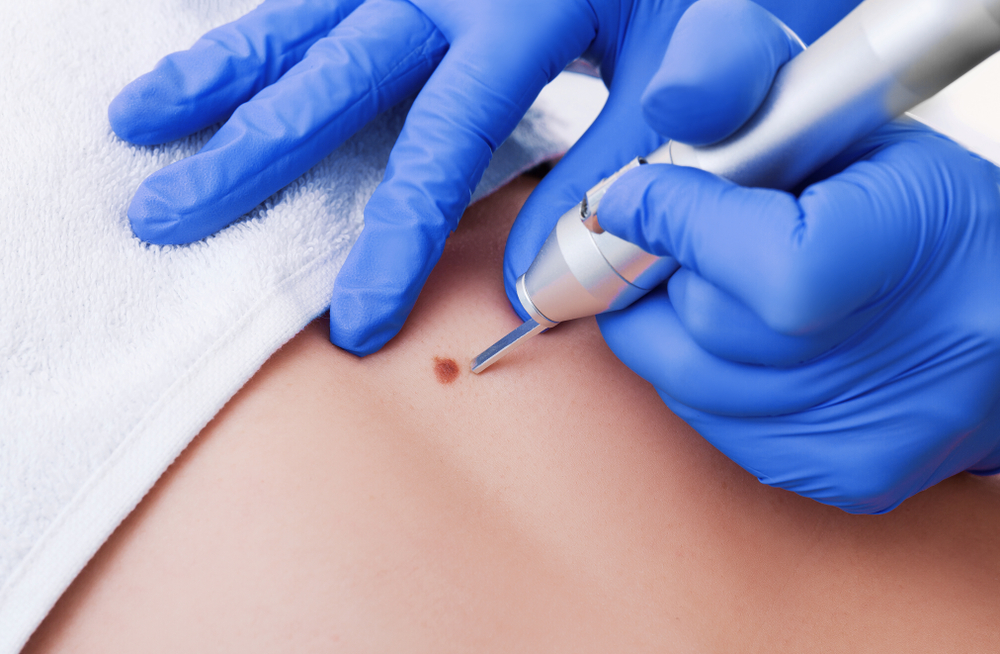Cryotherapy originates from the Greek word ‘cryo’ which means cold, and ‘therapy’ which means cure. Therefore, cryotherapy means use of extreme cold temperature for therapeutic purposes.
The agent or chemical that is used for inducing extreme cold temperature is called cryogen. In medical science, cryotherapy is also referred to as cryosurgery or cryoablation, and is an effective procedure that uses cryogen, especially liquid nitrogen to create an extremely cold environment, and freeze and destroy the abnormal tissues, including cancer.
Destruction of benign cancer cells require a target temperature of -20 C, whereas cancerous cells require -50 C. It is an evolving treatment modality for several cancers and has demonstrated equal or better outcomes than other ablative techniques.
Keeping cryotherapy as a base, several molecular-based therapies are being explored to enhance the elimination of cancer cells in different cancer types.

Cryotherapy for cancer
Cryotherapy is used for treating some of external and internal cancers, precancerous, and non-cancerous conditions.
It has been effectively used to treat bone cancer, prostate cancer, localized liver cancer, retinoblastoma, early-stage skin cancer, AIDS-related cancers, such as Kaposi sarcoma, and some precancerous skin growths, such as actinic keratosis, and precancerous cervical condition, such as cervical intraepithelial neoplasia.
Currently, the long-term effectiveness of cryotherapy in breast, colon, and kidney cancers are being researched. Also, the effects of cryotherapy in combination with other cancer treatment modalities, such as hormone therapy, chemotherapy, radiation therapy, and surgery are being evaluated.
The procedure for cryotherapy
Depending on the location of the cancer tissue, cryotherapy can be done in the following ways:
- External Cryotherapy: In this procedure, a spraying device or a cotton swab is used to apply liquid nitrogen directly to the cancer cells.
External cryotherapy is advised for the destruction of external tissues, and is indicated in case of external solid tumours, such as skin cancer.
- Internal Cryotherapy: In this procedure, a small incision is made on the skin to insert a cryoprobe (a long, blunt, flexible surgical instrument) in the body. By using imaging tests, such as an ultrasound, CT (computerized tomography) scan or MRI (magnetic resonance imaging) scan, the probe is guided to freeze and destroy the abnormal tissue.
Internal cryotherapy is also performed using laparoscopic or percutaneous access. Internal cryotherapy is indicated in case of internal cancers, such as cancer of liver and prostate.
How does it work?
The cryogens used for clinical purposes include liquid nitrogen, carbon dioxide, or argon gas (in case of internal tumours).
When the cryogen is applied or delivered near the tumour, the blood vessels and capillaries that supply nutrients and oxygen to the cancerous cells are damaged. The direct injury occurs due to the formation of ice crystals, induction of osmotic cell injury, and disruption of cellular mechanisms.
As the tissue temperature gets cold, ice crystals begin to form between the cells, thereby rapidly drawing water out of cells and creating an osmotic gradient.
As the cooling continues, ice crystals begin to form inside the cells causing its rupture. As soon as thawing begins, cells undergo further damage and do not survive.
Cancers that can be treated with cryotherapy
Prostate cancer, liver metastases, skin cancer, precancerous lesions and tumors of the oral cavity, cancers of the rectum, and skin are some FDA approved cancers that can be managed with cryotherapy.
- Prostate cancer: Cryosurgical treatment is a widely accepted alternative to radical excision in prostate cancers. It is usually recommended as a primary treatment option for early-stage prostate cancer or after other cancer treatments to remove the remaining cancer cells.
In prostate cancer, several hollow probes are inserted into the prostate under the guidance of transrectal ultrasound (TRUS). Extremely cold gases are passed through these needles to destroy the prostate cells without damaging the surrounding tissues.
- Liver cancer: Cryosurgery has been used for several years for the treatment of liver cancer. Although cryotherapy is not a permanent cure, its main goal is to improve the survival rates.
Cryotherapy is recommended in case of a primary tumour or metastatic liver tumour, or if the liver cancer is unresectable or not responding to other treatment modalities.
- Retinoblastoma: Cryotherapy is effective in treating small tumours located in front of the eye. the procedure may have to be done 2 to 3 times, with a gap of a month between the treatments.
- Early-stage skin cancers: Early-stage, small skin cancer can be easily managed with cryosurgery. In most cases, it is combined with preliminary curettage.
Cryotherapy is a good option for people who are not eligible for surgery. Although the cure rates are about 99%, it is not recommended in case of larger invasive tumours or tumours located at the scalp, nose, ears, eyelids, or legs.
- Precancerous skin growths known as actinic keratosis: Actinic keratosis is a precancerous skin condition characterized by scaly patches on the skin, which may turn cancerous if left untreated.
Cryotherapy is the standard first-line treatment for actinic keratosis. In this therapy, liquid nitrogen is sprayed onto the skin to freeze and destroy the cancerous tissue.
- Precancerous conditions of the cervix known as cervical intraepithelial neoplasia: Treating cervical intraepithelial neoplasia can prevent the risk of cervical cancer in women.
According to a study, cryotherapy effectively cured cervical intraepithelial neoplasia in 88% of women.
- In rectal cancers, Cryosurgery is only a palliative treatment option to decrease local symptoms.
Side effects of cryotherapy
Like any procedure, cryotherapy also carries some side effects, but these side effects are less severe than the side effects of a surgery or radiation therapy. However, the side effects of cryotherapy depend upon the treated condition, as listed below.
For cervical intraepithelial neoplasia
- Bleeding
- Lower abdominal cramping
- Lower abdominal pain
For skin cancer
- Scarring
- Swelling at the site of treatment
- Loss of sensation due to nerve damage
- Loss of pigmentation, rarely
- Loss of hair, rarely
For retinoblastoma
- Swelling of eye or eyelid for a few days
- Blind spots
- A temporary detachment of the retina from the eyeball
For prostate cancer
- Blood in urine for a few days
- Soreness at the region of needle insertion
- Pain and burning sensation while urination
- Loss of bladder control
- Bleeding or infection at the site of treatment
- Erectile dysfunction
Advantages of cryotherapy
Cryotherapy offers the following benefits over other cancer modalities:
- Minimally invasive compared to a conventional surgery
- Small incision
- Lesser pain
- Minimal risk of bleeding
- Cost-effective procedure
- Shorter hospital stay
- Quicker recovery
- No or minimum damage to the surrounding tissue
However, Cryotherapy is contraindicated in pregnancy and certain conditions like hypertension, impaired circulation, history of vascular impairment like frostbite, angina pectoris or other severe cardiac disease, hypersensitivity to cold, such as Raynaud’s phenomenon, cold allergy(urticaria), cryoglobulinemia, and paroxysmal cold hemoglobinuria.
Disadvantages of cryotherapy
Uncertainty about the long-term effectiveness of cryotherapy is a major disadvantage. For some tumour types, delayed sloughing of the tissues may pose a challenge and need close medical supervision. For the same reason, the beneficial effects of the procedure may seem delayed.
However, the healthcare team would carefully weigh the benefits against the risk before advising cryotherapy for their patients.
Cryotherapy is an evolving cancer treatment modality and expected to possess good therapeutic potential. Although the initial results have been positive for cancer treatment, more research is needed to establish its efficacy and long-term safety.


